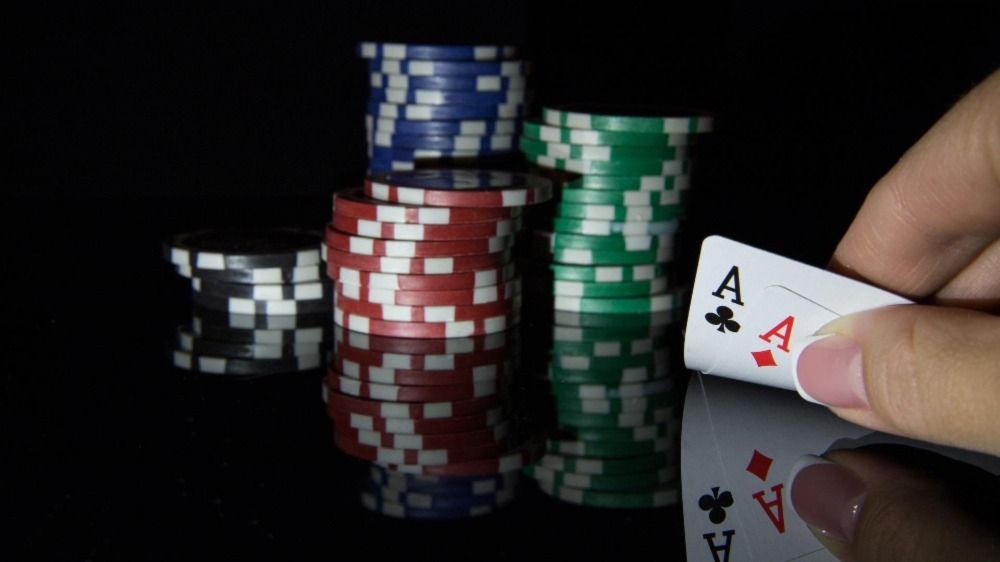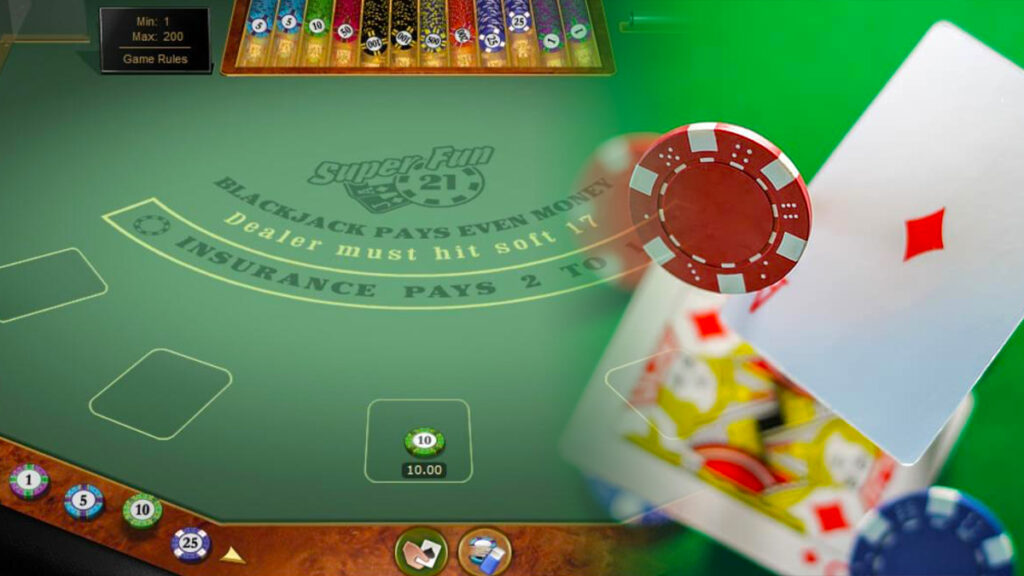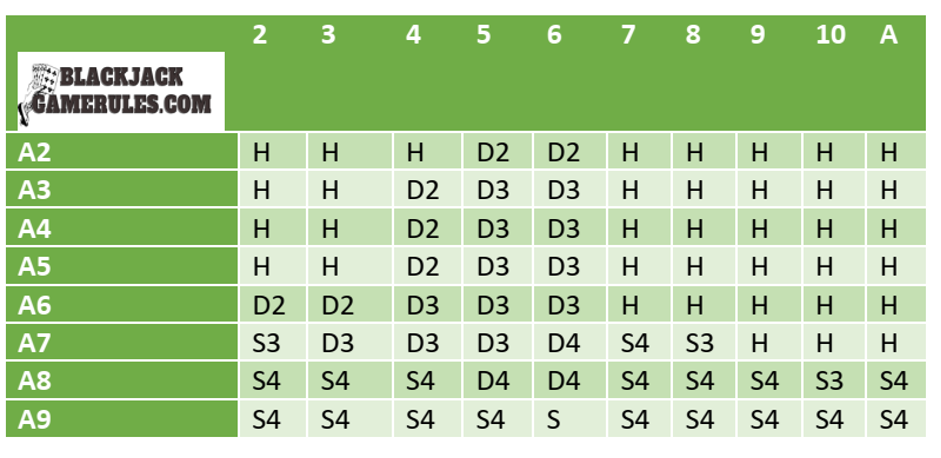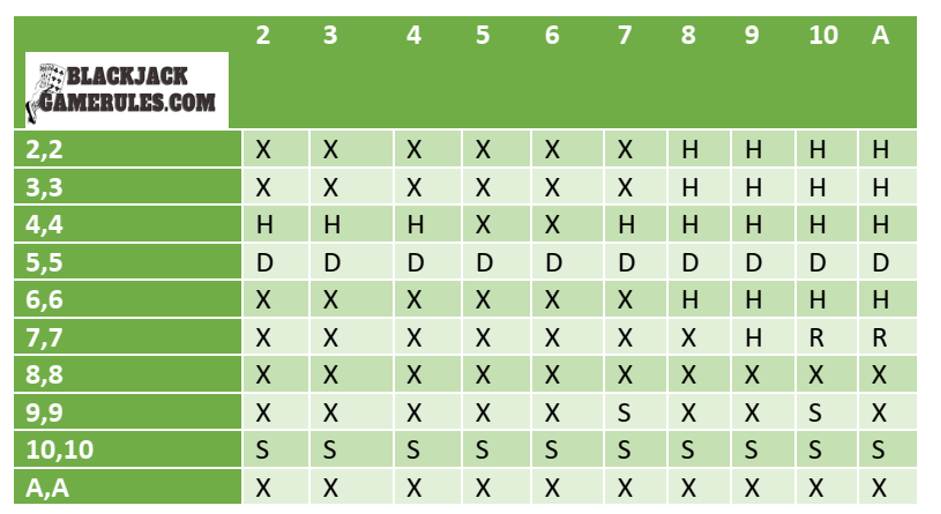The name Super Fun 21 says a lot about the game. First, the number 21 shows that this is a typical game of blackjack where the goal is to beat the dealer to a blackjack (21). However, unlike the traditional game, Super Fun 21 Blackjack adds some twists and tricks to the gameplay, making it much more exciting. There are some slight changes to the game rules and what counts as blackjack in this variant of the game. Even more, the payout is different, which is why this article is a must-read for every blackjack fan. Understanding the game and how it works will also help to identify it the next time you decide to stop by a casino. So, read on to find out more.

How to play Super Fun 21 Blackjack
Super Fun 21 is also called Blackjack Super 21 or just Super 21 in some casinos. The only way to identify the game is through the rules, which is why it is a crucial part of the game. The most popular setup is a 6-deck shoe, even though this can vary from 2 to 8 from one casino to the other. The players receive two cards dealt face up while the dealer gets two cards, an upcard and a hole card. Of course, this comes after placing bets by using the chips on the table and moving it to the appropriate spot. Afterwards, the player decides on the next move after carefully examining his hand and that of the dealer. In blackjack, it doesn’t matter the number of players on a table; the battle is only between each player vs. the dealer. The player can place side bets as allowed by the respective casino. Insurance bet pays 2 to 1, which is a typical side bet for Super Fun 21 Blackjack. This happens if the dealer’s upcard is an ace and the dealer offers the player insurance before checking the hole card for a blackjack.

There are many other moves that the player can choose to make depending on the card values compared to the dealers. Afterwards, the dealer makes his move, and the player is busted if it’s a stronger hand. If otherwise, the player wins, and the payout depends on the move.
Super Fun 21 Blackjack Rules and how it differs from standard blackjack
As already mentioned, Super Fun 21 is very similar to the standard blackjack. However, a thin line differentiates them, which can affect your gameplay, especially when it comes to applying the right strategies. Below are some of the crucial rules that apply to Super Fun 21 Blackjack:
| Players can double down after a split |
| Players can double down on any number of cards |
| Re-splitting is allowed up to four times, including aces. |
| The dealer HITs on soft 17 |
| The dealer peeks the hole card if the upcard is an ace |
| Blackjack pays even money |
| Insurance bet is available and the payout is 2 to 1 |
| Surrender option is available |
Mostly, these rules are the same as the standard blackjack, so how is Super Fun 21 different?
A notable difference is that blackjack pays even money in Super Fun 21 as against the usual 3 to 2. Many lenient rules favor the player’s hand to compensate for this low payout.
- Players can surrender at any point in the game, even after hitting, splitting, or doubling down on a hand.
- The player’s blackjack wins over that of the dealers at all times, including when the dealer has a natural blackjack.
- The player automatically wins a hand with card values of 20 from six cards.
- Blackjack in diamonds has a payout of 2 to 1 against even money payout for regular blackjack.
You can take a closer look at these rules. Many of them are unavailable in the standard blackjack variant, which explains why Super Fun 21 is a popular option as it lives up to expectations.
Players Move in Super Fun 21 Blackjack
Based on the rules already discussed, every player has the option of performing the following moves:

HIT: A player can request an additional card on a weak hand. As long as you do not exceed card values of 21, you can take as many cards as possible. As a special rule in Super Fun 21, you get rewarded if you can reach 20 and 21 with five and six cards, respectively.
Stand: Standing means that you are willing to end the game. Once a player opts to stand, the dealer checks his hand, to sum up, the card values. If the player has a superior hand, he wins; otherwise, the player is busted.
Double Down: This move is most common when the player has a strong hand against the dealer’s upcard. It allows the player to double their bet, after which an additional card is dealt. Unlike other variants where this feature is only permitted after the first two cards have been dealt face up, the double down feature is allowed at any point in the game when playing Super Fun 21 Blackjack.
Split: In this move, the player can split a pair of cards to form separate hands. Splitting in Super Fun 21 Blackjack is allowed up to four times, including aces. Players can also double down, hit or surrender after splitting.
Surrender: Sometimes, the odds might not be in your favour from the start of the game. The moment you look at your cards, especially in comparison with the dealer’s upcard, you know it’s going to take a miracle for you to win. Rather than lose the entire bet, you can decide to surrender early in the game. That way, you only lose half your bet. Another major difference that makes Super Fun 21 Blackjack so exciting is that players can surrender at any point in the game.
Super Fun 21 Blackjack Strategies
In every blackjack game, the strategy is based on the player’s face-up cards and that of the dealer. What is the most mathematically correct move to make after reviewing and summing up your hands and comparing them against that of the dealer’s upcard? There are three major scenarios that are usually discussed.
- Hard hands
- Soft hands
- Pairs
The best move for hard hands
The following are the recommended moves to make when you have a hard hand (no ace) against the dealer’s upcard:
- If your hand is an 8 or less, the best move is to request another card; HIT.
- If the dealer’s upcard is in the range of 6 and below, double down with a 9; otherwise, HIT.
- Unless the dealer’s upcard is a 10, double down on a 10, and if otherwise, HIT.
- When you have an 11, always double down.
- Hit when you have a 12, but if the dealer’s card is between 3 to 6, STAND.
- If the dealer’s upcard is between 2 to 6, STAND on 13 and 14; otherwise, HIT.
- If the dealer’s upcard shows 2 to 6, STAND on 16, SURRENDER if the dealer’s card is a 9, 10, or A; if otherwise, HIT.
- STAND on 17, except when the dealer’s upcard is an ace. In that case, SURRENDER.
- STAND on all cards from 18 to 21.
The best move for soft hands
If your hand contains an ace, the following moves are recommended:
- Always HIT on a soft 13 (Ace + 2).
- If the dealer shows a 5 or 6, double down on 15, and if otherwise, HIT.
- Double down if the dealer shows card values from 4 to 6 against a soft hand of 16; otherwise, HIT.
- Double down with a 17 and 18 against the dealer’s cards from 3 to 6. STAND with an 18 if the dealer’s upcard is either a 2, 7, or 8.
- Except the dealer is showing a 6, STAND on 19, and if it is a 6, double down.
- Always STAND on 20+
The best move for paired hands
- For a pair of 2s, SPLIT if the dealer shows 2 to 7; if not, HIT.
- For a pair of 3s, SPLIT if the dealer shows 3 to 7; if not, HIT.
- For a pair of 4s, SPLIT if the dealer shows 5 or 6; if not, HIT.
- Double down on a pair of 5s against the dealer’s upcard of 10, and if otherwise, HIT.
- SPLIT a pair of 6s unless the dealer’s upcard is between 2 to 6.
- Split a pair of 7s against the dealer’s card from 2 to 7; otherwise, HIT.
- Split a pair of 8s unless the dealer has an Ace and, in that case, SURRENDER.
- Unless the dealer shows a 7, 10, or Ace, SPLIT a pair of 9s, and if the dealer shows any of these cards, STAND.
- Stand on a pair of 10s.
- Always SPLIT a pair of Aces.
Although most of these strategies are the same for a standard blackjack, the chart looks slightly different. That’s because Super Fun 21 allows doubling and surrender on more cards. Below is a typical strategy chart:



Conclusion
If you are looking to take a trip away from the usual standard blackjack game, then Super Fun 21 Blackjack is an exciting option to try for many obvious reasons. Of course, the gameplay is similar, but there is a slight difference in the rules, and we have covered them in detail. In addition, the strategy chart looks different, and if you are new to this game, then it is ideal that you study the chart before visiting a real table.
